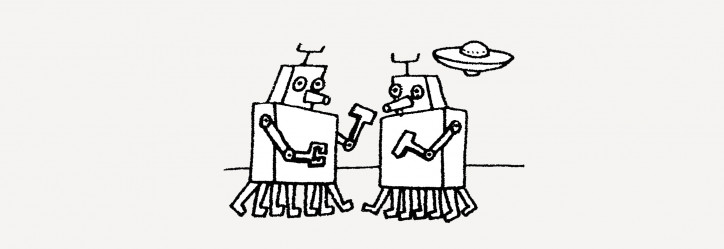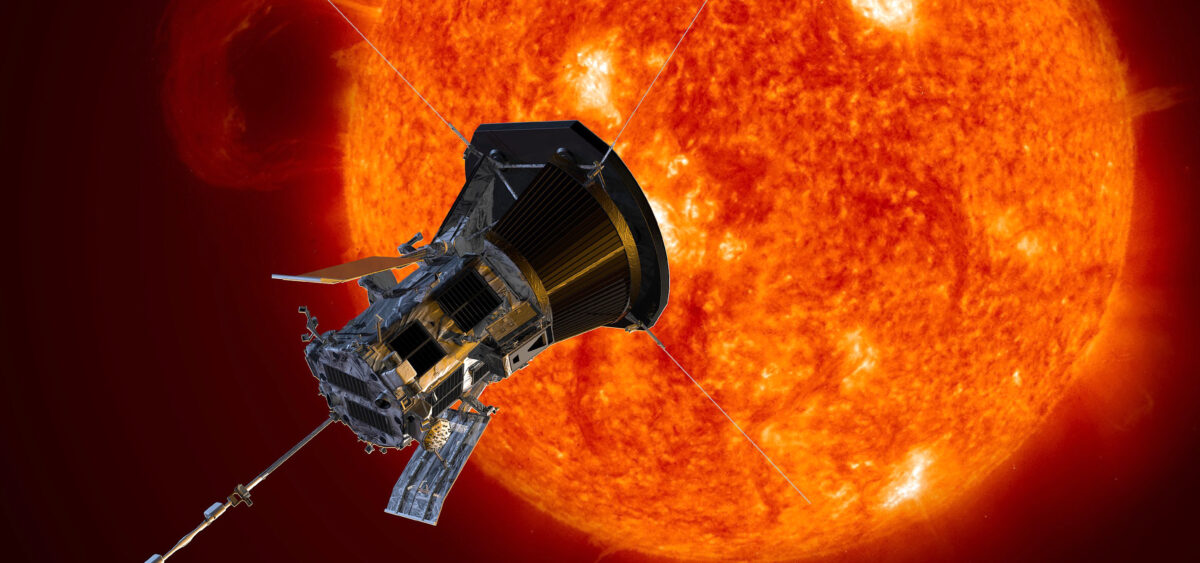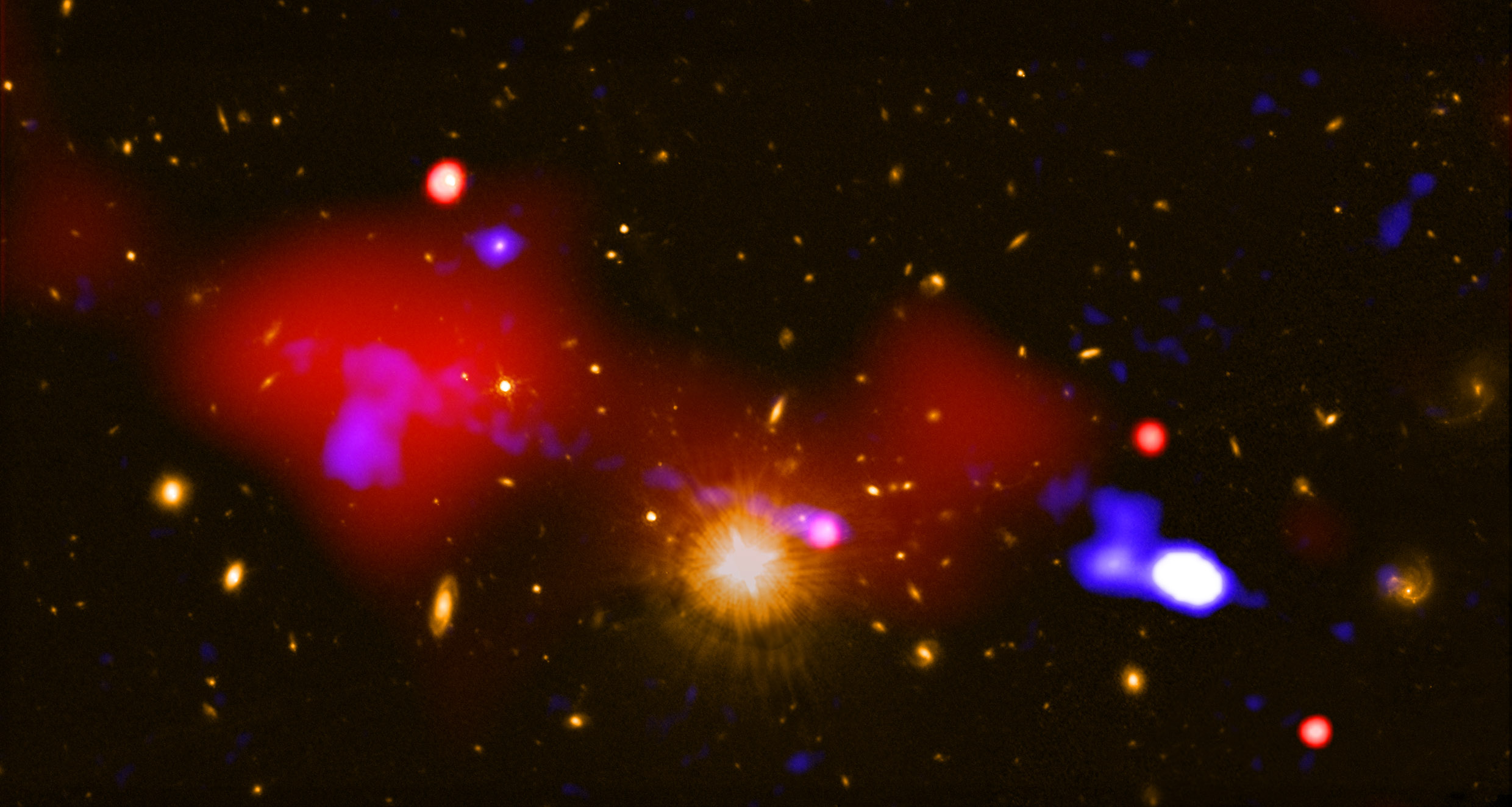
To Touch the Sun
On June 1, 2022 the Parker Solar Probe sent by NASA flew through the corona, the incredibly hot outer layer of the sun’s atmosphere, for the fifth time. The corona’s high temperature—1.8 degrees fahrenheit—is a mystery to astrophysicists. It is hard to say why the layer is so hot, while the temperature of the sun’s surface is only around 9,932 degrees. It’s a bit like using a stove to heat a room to a temperature many times higher than that of the stove itself.
For anyone asking how it was possible for the Parker probe to withstand the temperature of 1.8 million degrees fahrenheit in the solar corona, here is the answer: the temperature there is indeed very high, but the density of matter is low, so the heat doesn’t do so much damage. You could put your hand inside a hot oven and hold it there for a while, even though the temperature inside is 350 degrees fahrenheit or more. If, however, you unwittingly touch the oven walls or a heated dish, burns await. This is the Parker Solar Probe’s secret: it does not touch anything, it only flies through the sun’s atmosphere, which is trillions of times less dense than that of the Earth. As a result, the Parker Probe doesn’t melt when it enters the solar corona. Still, the low-density but extremely hot atmosphere requires the probe to protect itself, and it does so with the help of a shield—a foam composite sandwiched between two carbon plates, the outer of which is painted white. During its visits to the solar corona, the five-inch thick, eight-foot diameter shield warms up to 2,553 degrees fahrenheit.
The probe’s apparatus, located behind the carbon shield, is kept at a safe eighty-six degrees fahrenheit during this time. Not all of them, though. Some of the instruments are not protected, such as the Solar Probe Cup used to investigate the solar wind. It’s made of molybdenum, wolfram, and titanium, as well as niobium, which is also the material used to make the antena measuring electric and magnetic fields.
When circling the sun, the Parker Probe sometimes flies close to Venus, whose gravity tightens its orbit. Therefore it gradually penetrates ever deeper into the hot corona. In the spring of 2021, it approached the surface of the star at 7.3 million miles, then reduced the distance to 5.3 million miles; in 2023, according to plan, the probe should reach 4.9 million miles in 2023, and 4.3 million miles the following year. Afterwards, it will probably succumb to the heat and stop working. Still, it is a great achievement of which to be proud—like the little prince and his fanciful adventures to other planets.
The Mystery of the Pacific Meteorite
Not far from Papua New Guinea, at the bottom of the ocean, there are remnants of an interstellar meteorite. These are tiny pieces, but finding them and bringing them to the surface would constitute a great scientific achievement. It would be the first piece of material from another star system to be held by human hands.
The less than a three-foot-long meteorite exploded in the atmosphere near Manus Island on January 8, 2014, but scientists did not immediately notice the event. It wasn’t until 2017, when an interstellar rock known as Oumuamua crossed our Solar System, that Harvard astronomy student Amir Siraj and his tutor Professor Avi Loeb decided to search the archives for other objects that may have flown in from outside of the gravitational pull of the Sun. They would recognize them according to their tremendous speed.
As Siraj explains in Scientific American, any object that crosses the Earth’s orbit at speeds above twenty-six miles per second is most probably of interstellar origin. The student and his professor quickly came across the trail of a meteorite registered by a US spy satellite off Manus Island. The meteorite entered the atmosphere of our planet at twenty-eight miles per second, which was promising. It was also necessary to take into account the movement of the Earth itself—after doing that, it was concluded that the space rock flew even faster, at around thirty-seven miles per second.
Naturally, Siraj and Loeb wanted to publish their discovery as soon as possible, but this is when they encountered problems. Even though the data gathered by the spy satellite was public, the information on the possible measurement error was a military secret (presumably so that no foreign intelligence could learn what equipment the US military has at its disposal, because the reason for secrecy is also a secret). That was it then, since the margin of error must be cited in a scientific article, the piece would not go to print. When Siraj finally managed to obtain a testimonial on the margin of error from the military, it was anonymous (the name of the issuer was confidential). As such, it had little worth in the scientific world, so the two astronomers had to keep lobbying.
They finally succeeded with the help of influential allies in important institutions. In March 2022, General John Shaw, the deputy commander of the United States Space Command, and Joel B. Mozer, director of Science, Technology and Research at the same organization, officially determined the margin of error of the satellite’s measuring devices. Siraj could finally boast about his discovery, the first interstellar meteorite ever recorded.
The object was called, rather unoriginally, CNEOS 2014-01-08. It has not yet been given as beautiful a name as Oumuamua (or—who knows—maybe it has but it’s classified information).
Quintessence vs. Entropy
Good news: The “heat death” of the universe is not at all a foregone conclusion! Physicists have announced a hypothesis according to which soon—in sixty five million years—space will stop expanding, and in a hundred million years, will even start to shrink.
It is hard to say for certain how things will turn out, but what we do know today is that the universe is expanding, which began to grow at an accelerated rate around four billion years ago. To explain why this is happening, scientists proposed the concept of dark energy, which works in the opposite way to gravity—pushing everything away and blowing it apart. According to the most popular version of the theory, this unknown form of energy could be woven into spacetime as a cosmological constant, i.e. a certain immutable value. The universe is expanding, therefore there is an increase in dark energy, making the universe expand more rapidly, and in the future it will do so at an even greater rate. In this view, the universe’s fate does not look too rosy: everything will grow apart ever-faster, and cool down. In approximately one hundred trillion years, old stars will burn out, and new ones will stop forming. Then, plenty more time will pass and black holes will evaporate. Eventually, the universe will reach a state called heat death (alternatively, all matter will be torn to shreds in a hypothetical event called the “Big Rip”—it’s hard to know what’s worse).
Yet, as mentioned above, there is also another theory, the most famous champion of which is Paul Steinhardt, a theoretical physicist from Princeton University. In the spring of 2022, he and his colleagues presented the idea in an article published in PNAS (Proceedings of the National Academy of Sciences of the United States of America), arguing that it is not necessary to assume that dark energy is a constant woven into space. It can be a field that changes over time, something that the physicist calls by the slightly old-fashioned name of “quintessence.” If we start from this assumption and interpret the history of the universe in this spirit, it turns out that dark energy can disappear over time and turn into something resembling ordinary matter; something that does not oppose but enhances gravity. As a result the universe will begin to shrink—in fact, this stage has already begun, we just can’t see it yet.
It is hard to verify this theory. Due to the enormous scale of these events, it’s impossible to simply wait for them to unfold, and publish the conclusion in the next issue of a scientific quarterly. Nor do we have another universe with which to conduct comparative research. Moreover—and this is just as troublesome—we don’t understand what dark energy actually is. Perhaps, when our knowledge on the latter subject improves, we will be able to state something more definite.
For now, however, nothing is certain. The theory is being written about, nonetheless, just in case anyone is wondering whether it’s worth getting up in the morning and going to work or school, given the universe is doomed to heat death, anyway.
The Robot and His Brother
Could it be that this flat, irregular, shiny shape awoke some memories in the Perseverance rover? Did the indefatigable explorer figure out that he was looking at the parachute on which he landed, through the soft layer of the atmosphere, on the red, endless wasteland of Mars? Previous rovers have inspected their parachutes immediately after landing, but this time NASA decided otherwise. Perseverance took up exploring the Jezero crater first. It wasn’t until the 404th Martian day after landing that this car-sized robot traveler was allowed a glimpse of its chute through his camera lens from a distance—an indication that somewhere above the drab sky, eternally obscured by wind-blown dust, there is a place from where the robot originates.
There, in colorful California, lives the Perseverance rover’s twin brother bearing the cheerful name of “Optimism.” Surrounded by constant care, he’s sometimes allowed to wander in a landscape mimicking Mars. Equipped with instruments very similar to those of Perseverance, he’s tasked with testing the software. If the engineers find any bugs in the code, they fix them and send the new version to Optimism’s Martian counterpart.
This is the division of labor. Naturally, Perseverance is the hero of the two siblings, and he’s expected to fulfill the steadfast expectation of his name. Tireless driving across an ocean of red gravel. Gathering and examining samples. Accepting software revisions developed by his twin brother and the smiling bipeds around him.

In a Good Light
The scientists searching for extraterrestrial civilizations as part of the SETI (Search for Extraterrestrial Intelligence) program, have prepared a new message for aliens. They claim that it is better prepared than the one sent in 1974 via the Arecibo radio telescope. The letter contains thirteen square pages encoded in BMP file format, beginning with an introduction, using the binary system, to the decimal system—it is assumed that, if the recipient deciphers the bitmap, the decimal system should also be understandable. What follows is an overview of human achievements in mathematics and physics—so that the reader won’t think the message was sent by some tinkler who accidentally got hold of the radio telescope. There are also sketches of naked human silhouettes and a diagram of DNA proteins. It all looks very nice and the aliens should like it. Since it’s a simple bitmap, the graphics are a bit retro, a little in the style of the Space Invaders arcade game, but it’s likely the prospective addressee will not have such associations.
The message is to be sent in the direction of the stars located some thirteen thousand light years from the Solar System, midway between us and the center of the galaxy. It is not yet clear, though, what device could be used to do this. There are powerful radio telescopes on Earth, but they are designed to receive signals, not send them. The only one that could serve as a transmitter—the Arecibo in Puerto Rico—has been out of service for two years, and this is unlikely to change. Either the Chinese FAST or California’s ATA telescope will have to be adjusted for transmission purposes. This, however, is only a technical issue; the bigger question is whether sending such a message is worth it at all. Critics may be right when they cite numerous examples from Earth’s history, of how encounters between different cultures or civilizations resulted in the complete annihilation of one of them. There is little good to be said about meetings between humans and other species, as well. We are not masters of communication, diplomacy, and peaceful coexistence. As for these hypothetical aliens—we’ve yet to find out.
SETI experts do not take these arguments lightly, yet they do claim that sending a message to other cosmic inhabitants is a great opportunity to show ourselves in a good light. Apparently, they believe that the best way to do this is by presenting humans as beings who walk around naked and are interested solely in the achievements of hard science—hence the content of their letter.
We have no idea how the representatives of distant civilizations will respond to this business card, and will certainly not know in our lifetime. The letter will travel to its potential recipient for thirteen thousand years, and the response, the same amount of time. Moreover, the aliens will need a few days to write back, unless they have a reply ready for such occasions.
There is also a risk that the aliens will not understand the letter. In the early days of SETI, the astronomer Frank Drake showed preliminary versions of the cosmic message to a number of prominent scientists, amongst whom was no shortage of Nobel Prize laureates. None of them deciphered the information, and only one figured out that the series of zeros and ones should be arranged into an image. That person was Barney Oliver, the director of Hewlett Packard (HP) laboratories, who sent the answer, also in the form of zeros and ones. After translating them into a picture, Frank Drake saw a martini glass with an olive. I wonder how the aliens will answer.

Translated from the Polish by Adam Zdrodowski










